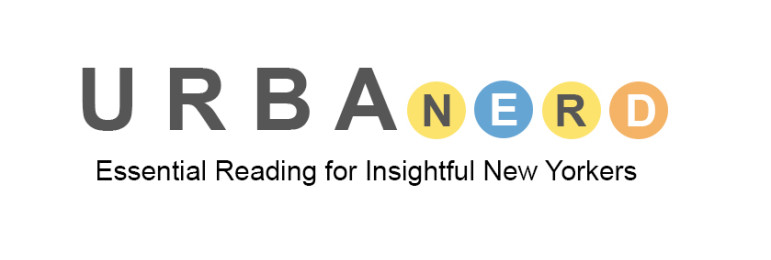
Frederick Joseph
The Czechs fought their Velvet Revolution. The Ukraine endured its Orange Revolution. And if Pat Lynch is right, New York will have a “f—ing revolution” if Bill de Blasio gets his way. At least we know what to call it now.
The “war of words” (as the cliché goes) between de Blasio and Lynch might look like an argument between a politician and a cop. But really it’s an argument between a politician … and a politician.
That’s neither a diss to nor an excuse for either guy. It’s just reality.
De Blasio is, as you probably know by now, the mayor of New York City. His constituency is the city’s 8 million-plus citizens—or more accurately, the million or so who vote. He was elected on a platform of increasing police accountability, which polls indicated was important to many voters but especially to his progressive, multiracial base.
Lynch is president of the Patrolmen’s Benevolent Association, the largest of the city’s police unions. That means he is a politician with his own constituency to satisfy—namely, the 20,000 or so people in the NYPD with the rank of police officer. Lynch was a union dissident in the mid-1990s who assailed the PBA leadership for cronysim and ineffectiveness, the latter manifested in a particularly stingy contract. He ousted a sitting leader in 1999, cruised to re-election with 70 percent of the vote in 2003, and was unopposed in 2007 and 2011.
A few months after the 2011 PBA election, at the height of the ticket-fixing scandal that saw a bunch of officers indicted in the Bronx, union delegates walked out of a PBA meeting in Queens to demand Lynch be more forceful in defending the cops. If you read comments from this autumn in online forums frequented by cops, you’ll find at least a few posters who believe the PBA leadership should be replaced in June 2015, when Lynch will presumably seek a fifth term in office.
Neither de Blasio nor Lynch are a puppet to their respective political realities. De Blasio really is a progressive, and Lynch has a classic cop background—one of seven kids, son of a subway motorman; in speeches delivers the cop’s perspective with a level of emotion that’d be hard to fake.
Both men make arguments with more than one dimension. For all his criticism of overpolicing, de Blasio never called during the 2013 campaign for the end of stop-and-frisk (John Liu did) and brought in a commissioner committed to “broken windows” policing. And while Lynch has positioned himself against NYPD critics, the PBA has criticized some of the same practices—quotas and numbers-driven policing among them—that the union’s opponents on the left have questioned. And to make things more interesting, both men need a police contract that works well for them.
Both the mayor and the union leader have both a genuine duty to speak for their constituents and a self-interested stake in keeping most of their constituents happy with what they say. That’s not an excuse for them to say crazy stuff—for instance, just hypothetically, suggesting that cops carry out a work slowdown—but it explains why they might.
Now, other things to think about …
Debating the complexities of geography and poverty. We’ve all been taught that concentrated poverty is a bad thing. But de-concentrating poverty is no panacea, either. Over the past 20 years, though policies like HOPE VI and Section 8 and other changes, there’s been a suburbanization of poverty in the U.S., and there’s little evidence that low-income families that move are guaranteed to tap into a deeper stream of economic opportunity. So policymakers have tended to choose between two different goals: Focus on breaking up concentrations of poverty, or focus on trying to inject economic opportunity into high-poverty areas. A very thoughtful “slow debate” on the Furman Center’s website explores the tradeoffs and potential common ground between the two approaches.
In de Blasio development deals, don’t forget the workers: 32BJ is out with a report finding that raising prevailing wages—the pay rates set by government contracts for private sector workers—can substantially fight inequality. The report argues that increased worker productivity and morale and decreased turnover will make up for the steeper cost of higher wages. Most interesting, though, is the report’s argument that prevailing wages ought to be part of the mayor’s broader development agenda, which presumably would mean affordable housing development as well: “Flexing its service contract buying power and leveraging city actions and subsidies to aid real estate developments, the city is in a strategic position to set standards for the wages of tens of thousands of low-wage workers,” the report found. Add building-service workers’ wages to the complex math of subsidies, builders’ wages, rent-levels and profits that will determine what kind of “affordable housing” gets built, to what extent, and where.
Will protecting more home-care workers cost them? A new federal rule will put more home-care workers under fair labor rules that require overtime pay and other benefits, but there’s debate on whether that will boost full-time employment in the sector (because companies will want to avoid paying overtime), reduce how much existing workers earn or force more patients into institutions because home care gets more expensive. A report from the Government Accountability Office charts the possible impact on some of America’s lowest-paid workers.
Would a shining red nose on his lead reindeer really have helped Santa navigate through thick fog? I still don’t know. The important thing is it didn’t stop him from delivering my Millennium Falcon in 1983. For those who celebrate it in the traditional sense or by going to the movies and getting Chinese food, Merry Christmas! UrbaNERD will be back the week after.








